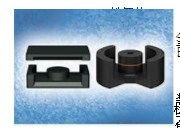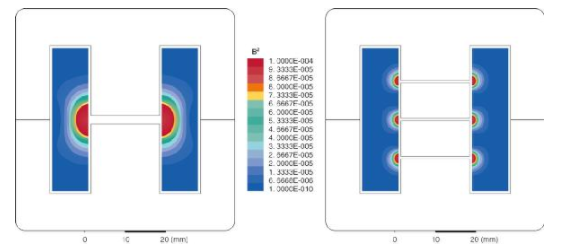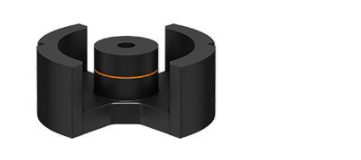When ferrites are designed for power supply units, besides miniaturization, improving efficiency is the most important research and development goal, even if 0.1% efficiency improvement is significant. In addition to power semiconductor components, ferrite cores are the decisive factor in improving efficiency. The TDK Group has specially developed new ferrite materials and optimized its geometry for the core design.
All types of power supplies require the use of ferrites, which are the basic components of inductors in a wide range of magnetic core designs. These inductors are the core components of energy storage devices and transformers in power transmission and galvanic isolation applications. Although current power efficiency has exceeded 98%, R&D personnel still strive to increase each 0.1%, especially in high-power applications. They hope to achieve greater miniaturization of components while further improving efficiency, thereby saving space and reducing emissions. weight.

The emergence of new wide bandgap semiconductor materials, such as GaN and SiC, has propelled this field because they can achieve higher switching frequencies, faster switching speeds, and lower losses. In principle, this means that significantly smaller inductors and transformers can be used, or that higher rated power can be handled with components of the same size. The disadvantage is that the existing conventional power supply ferrite materials cannot be used in the frequency range of MHz, and they generate significant losses at such high frequencies compared to low frequency conditions.
New PC200 materials can still achieve high efficiency at frequencies up to 4 MHz To take advantage of new semiconductor materials, TDK Group has developed a new MnZn-based PC200 ferrite material with a frequency range of 0.7 MHz to 4 MHz. The maximum transmission power can be achieved at a switching frequency of 1.8 MHz to 2 MHz and a use temperature of 100°C. The Curie point of PC200 ferrite material exceeds 250°C and is particularly suitable for transformers with toroidal or planar core topologies. Figure 1 shows the performance comparison of PC200 with traditional materials.

Figure 1: The new PC200 MnZn ferrite material offers the best performance at frequencies around 2 MHz and is therefore ideally suited for power supply topologies based on new wide bandgap semiconductor materials such as GaN and SIC.
Distributed air gap will reduce the loss by 70%
The use of a single air gap in a ferrite core is a common technique that currently delays core saturation and improves performance. However, this rather large single air gap results in a higher fringing flux effect, resulting in extra copper loss, especially at high frequencies. With its new geometry and core manufacturing technology for distributed air gaps, TDK Group is the first ferrite core manufacturer to offer a compact solution that reduces electromagnetic radiation and heat generation (Figure 2). By arranging a plurality of air gaps in the middle position, the distributed air gap effectively prevents the magnetic field from radiating into the environment.

Fig. 2: Due to the same distribution of air gaps (right), the power loss (red area) is significantly reduced compared to the traditional solution with a single air gap (left) . In high frequency applications, using three identical air gap solutions provides the best price/performance ratio.
A variety of magnetic cores are available in different sizes to provide E, EQ, ER, ETD, PM, and PQ three-distribution air gap core designs, and all EPCOS power materials are available.
The three air gap solution (Figure 3) provides the best price/performance ratio for applications where the switching frequency is 2 to 3 times higher than the normal frequency. It can reduce power loss up to
70%. In addition to standard solutions, TDK Group can also provide customers with a specified number of multiple air gap solutions.

Figure 3: A three-gap PM core is used. The third air gap is formed by mating components. This version is available in 50 to 114 cores.
Benefiting from the new PC200 ferrite material and advanced core geometry, we can now take full advantage of the new semiconductor technology while satisfying customers' needs for higher efficiency and miniaturization.
Hot Melt Type Fiber Optic Fast Connector
Hot Melt Type Fiber Optic Fast Connector,Afl Fast Connect Lc,Fast Connector Fiber
Ningbo Fengwei Communication Technology Co., Ltd , https://www.fengweicommunication.com